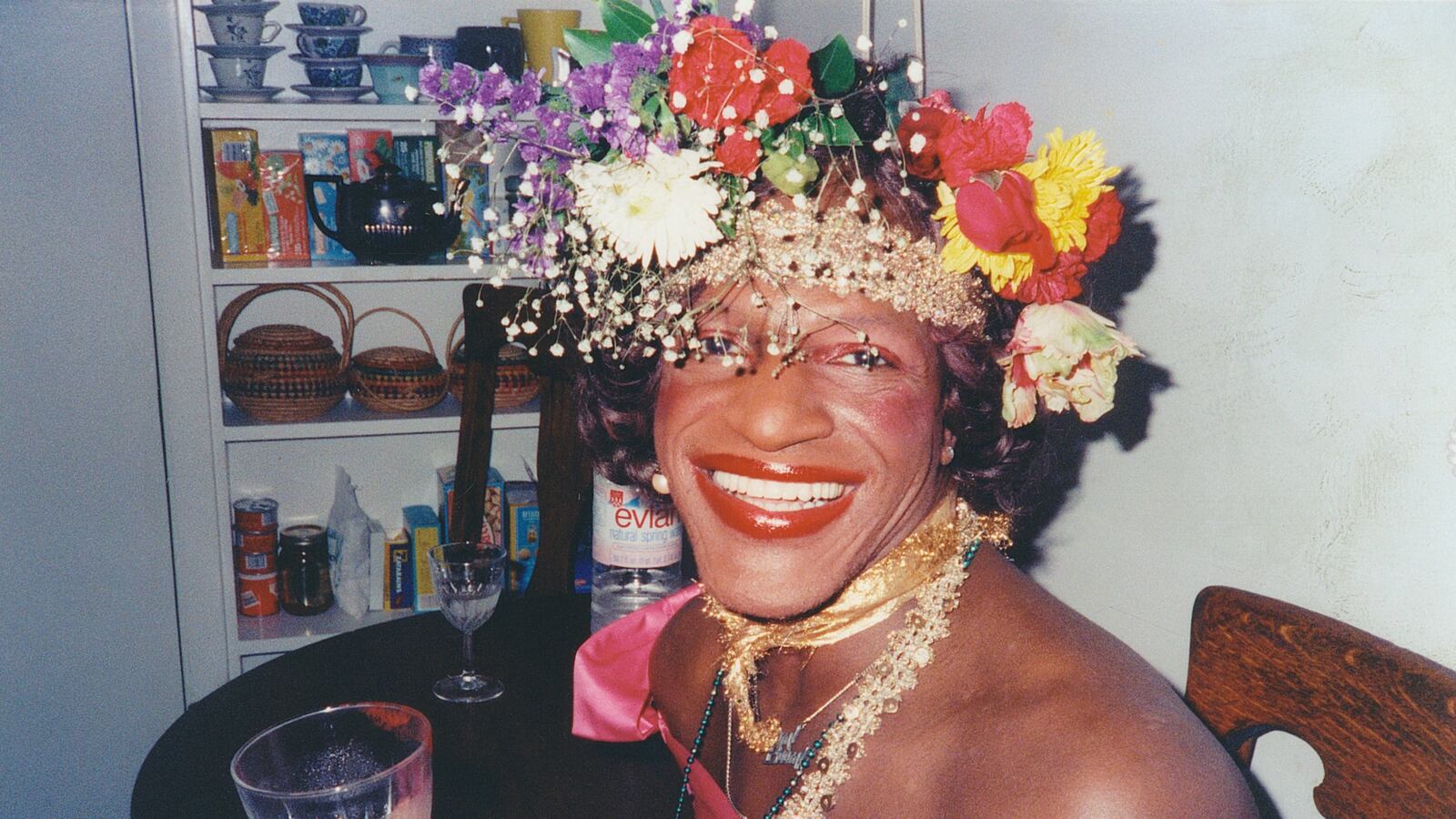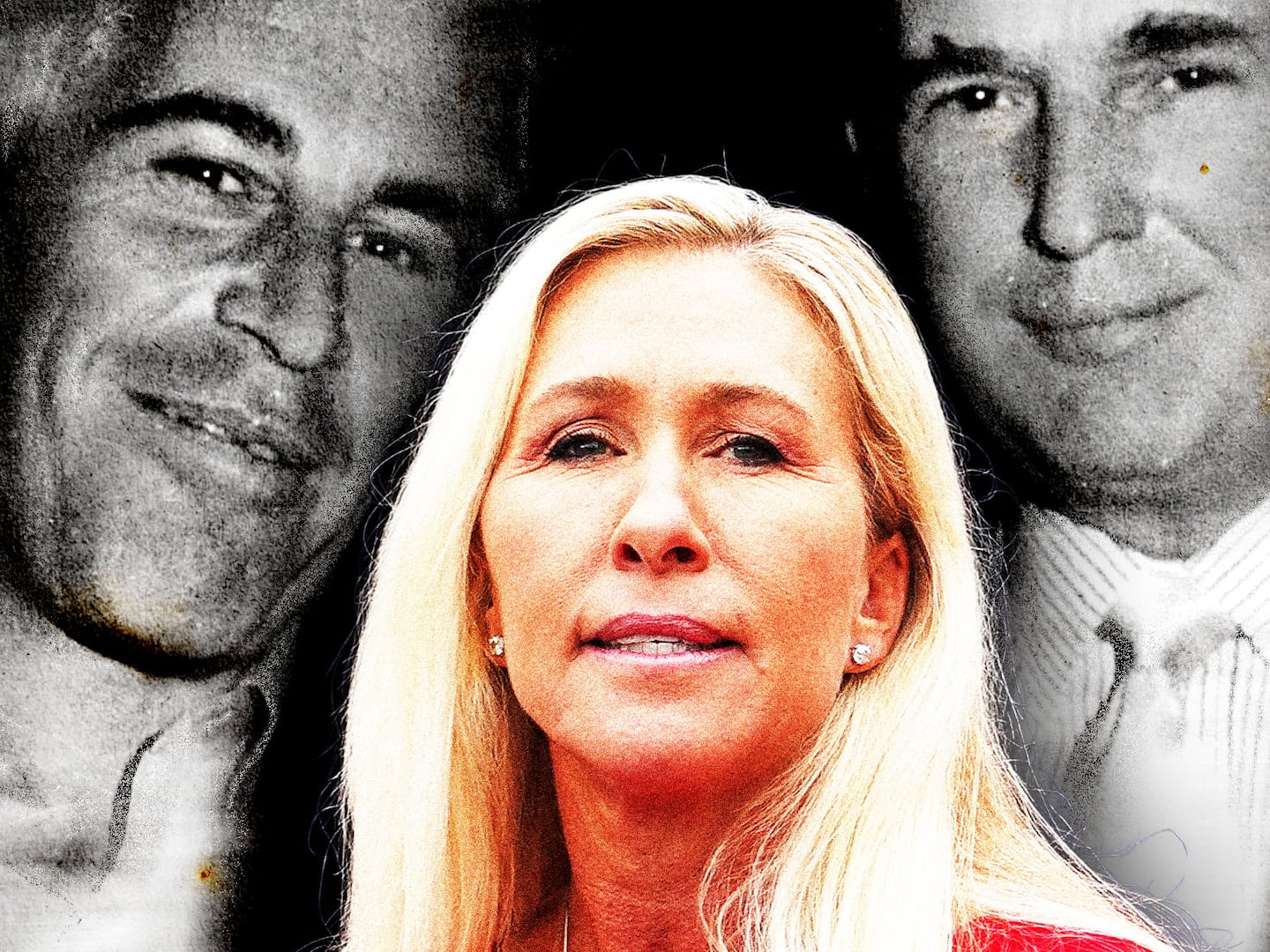Twenty-two transgender women have been murdered in 2017. But one who died 25 years ago is the subject of a new documentary, The Death and Life of Marsha P. Johnson, premiering Friday on Netflix. And there are several good reasons why.
First, Marsha P. (the P., she said many times, stood for “Pay it no mind!”) Johnson was an icon. Present at the Stonewall riots, crusading for transgender equality before “transgender” was a term, and holding court in New York’s queer underground for a quarter century, Johnson was fierce in all the meanings of the term.
The Death and Life is thus a welcome counterpoint to whitewashed pablum like the 2015 film Stonewall, which relegated a Johnson-like character to a bit part. Queer folks, this is your history. These are your ancestors.
Johnson was also, by all accounts, beloved. Sylvia Rivera, Johnson’s longtime political partner, and co-founder in 1970 of STAR, the Street Transvestites’ Action League, was outspoken, confrontational, and controversial. She comes through that way in the film, shouting or crying much of the time. (And more power to her!)
But Johnson, despite her tireless activism, was known to be lighthearted, affable, and charming.
Indeed, amid the often grim tone of The Death and Life directed by David France (How to Survive a Plague), Marsha herself is a breath of fresh air. Johnson predated the drag balls of Paris is Burning and the playful femme vernacular of “yaaaaas” and “kweeeen,” yet she anticipated all of them. Despite sometimes living on the edge of poverty, and living as an African-American transgender woman at a time in which simply walking down the street could be a fatal encounter—just like today—she had a joie de vivre that remains infectious on screen.
“Marsha was a fixture in the West Village,” said France, “known and adored by everybody. She was sometimes homeless and living on the streets but almost always present for decades. If you walked down Christopher Street, Marsha would receive you in the manner of a gracious host. She dispensed cheer and joy.”
And then there’s how she died, the mystery at the center of the new film. Johnson’s body was found floating in the Hudson on July 6, 1992. The police quickly, surely too quickly, classified her death as a suicide, even though there was no evidence of suicide and everyone who knew Johnson knew her to be positive, upbeat, and resilient. She was just 46.
Much of the film tracks the efforts of Victoria Cruz, a trans woman herself and a staffer at the Anti-Violence Project, to get some answers. Could Johnson’s death have been an accident? A random act of violence? A transphobic murder? We get to know Cruz as we follow her around, chasing down leads and getting stonewalled at almost every turn.
Amazingly, one of the most preposterous theories, which Johnson herself feared in the weeks before her death, may turn out to be true: that Johnson was killed by the mob. Turns out, her roommate, pioneering gay activist and longtime gadfly Randy Wicker, had antagonized several Mafia-linked figures by challenging their leadership of the for-profit street fair at the end of the annual New York pride parade.
Shortly after Johnson’s death, the Anti-Violence Project received a threat that Wicker would soon end up like Johnson.

I won’t spoil the surprise, of course, but suffice to say that nothing is clear-cut about Johnson’s case. Partly, that’s because the police didn’t care about the death of another trans street worker in 1992, and are seen blowing off Cruz’s investigation even today. Partly, it’s because it’s a cold case from 25 years ago with no physical evidence.
And partly it’s because, then and now, trans women of color have often lived lives of precariousness. Living at the intersections of racism, sexism, classism, homophobia, and transphobia, trans women of color are disproportionately targeted for discrimination and violence.
That is not to say that they aren’t also thriving and living full, fierce lives—Marsha herself was evidence of that. But they are doing so in the context of numerous threats to their safety and well-being, not to mention (legal) employment discrimination and (legal) health care discrimination.
For God’s sake, sometimes they can’t even pee in peace.
“One of the reasons I wanted to do this film, is to show how much has changed and how much is still the same,” France said. “We haven’t done nearly enough to address the systemic prejudice against transgender people, especially transgender women of color who are at high risk of physical violence, who have trouble finding jobs, who have greater difficulty finding acceptance of any sort.”
In fact, one unexpected obstacle that Cruz encounters is the Anti-Violence Project itself, which declines to provide more resources for a 25-year-old investigation when there are people needing help right now. It’s a setback for Cruz, but it’s easy to see both sides of the difficult decision.
Wisely, France juxtaposes the investigation into Johnson’s death with the trial of the murderer of Islan Nettles, a young trans woman beaten to death in 2013 by a young man who had flirted with her, unaware that she was trans. Indeed, much has changed—Laverne Cox, Janet Mock—but much has stayed the same.
At the same time, France faced a difficult choice in The Death and Life. It’s understandable that he structured it as a kind of detective story, and Cruz makes a strong protagonist. But even one of the few real revelations in the film—Cruz finally obtains Johnson’s autopsy report and discusses it with an expert—turns out to be ambiguous, and the detective story runs out of steam.
Meanwhile, other narratives—Cruz’s own, and that of Sylvia Rivera—sometimes take over the film, leaving this viewer wanting some more of Marsha P. Johnson’s wit and wisdom. Johnson’s family is surprisingly supportive, for example. What was that like? Also, I hadn’t known that Johnson—born Malcolm Michaels—often appeared in male clothing and used male pronouns. It would have been great to learn more about how she saw herself, how she lived her life day to day.
Johnson was, after all, a hero, and one of the great virtues of The Death and Life is that it brings her to life. This is someone whose name should be on signs in public places. She was a face of gay liberation. By choosing to make a whodunit, France left me wanting to know more about his subject.
One of the few on-screen revelations comes when Randy Wicker learns that his activities may have led to Marsha’s murder. I’ve met Wicker several times at gay events. An activist since 1958—in 1962, he participated in the first radio debate about homosexuality, taking on various psychiatric experts—Wicker is now eccentric, elderly, and often festooned in colorful outfits. Like Johnson, Rivera, and Cruz, he is the kind of proud weirdo one often meets in New York. He is a character.
Yet when Wicker realizes that Johnson may well have been pursued and murdered by mobsters intent on shutting him up, the joy drains from his face and tears well up in his eyes.
“Of course I feel responsible,” he says. It’s a poignant reminder that activism like his and Johnson’s, though fearless and flamboyant and fabulous, often comes at a terrible cost.
And sometimes, the debt is never repaid.






